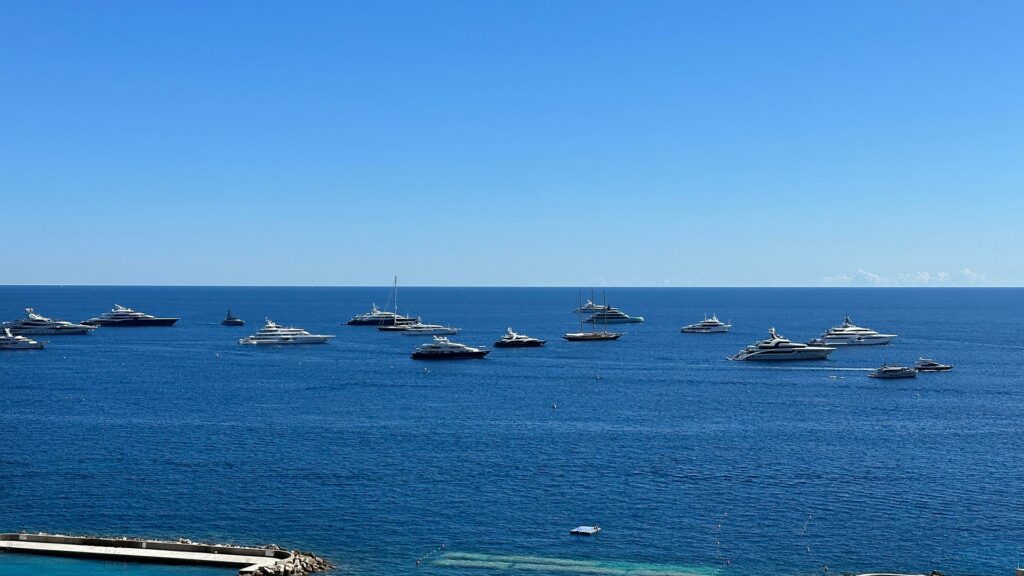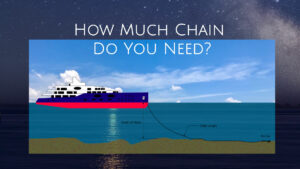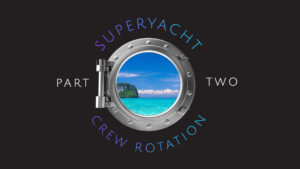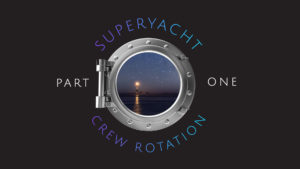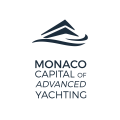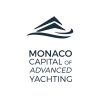I must admit to a bit of plagiarism here as the title, in part, comes from the World Maritime University (WMU) Report1 into the hours of work and rest (HOWR) in the shipping industry – link at the bottom.
When I saw the title, read, then reflected on its contents, it became clear there were parallels with the superyacht industry.
That being said, it is important to recognise that in the superyacht industry the issues surrounding misrepresentation of HOWR are generally limited to the peak periods; those times when guests are onboard when, due to a combination of high demands and insufficient crew. To successfully navigate the obligations and intent of the legislation it is important to fully understand the regulations. The alternative is creative application of HOWR – something I am sure that most yacht captains and crew will have experienced.
In my early days on yachts, working long hours to deliver the guest experience was the norm and just part of yachting. “Harden-up” was often the refrain when someone spoke out on fatigue. It was like the measure of a job well done and validation that yachting was for you.
Hours of work and fatigue were given very little attention and remained undocumented; unless you were crew you had no idea of the extent of the problem. Over subsequent years, regulations such as ISM and MLC were introduced to improve vessel safety and pollution prevention and the health and welfare of crew – less about yachting and about preventing the abuse of crew that was prevalent in some sectors of the shipping industry.
Some Reasons
Unfortunately, as the WHU report suggests, despite the regulations and a greater appreciation of fatigue and its consequences, there is still a culture where work hours are, either under reported or adjusted to facilitate compliance. There are many reasons given, many of which are analogous to the superyacht industry:
- Legacy – it’s part of the ‘can do’ attitude that is prevalent within yachting; the desire to deliver the best experience for the owner or guests.
- Manning – having an appropriate manning level to meet the diverse demands of the operation; not just ‘minimum safe manning’ which is often the metric.
- Contemporary Yacht Operations – yachting has evolved and so have the demands on crew, not only from owners who expect greater levels of service and experience, but also from the administrative burden that is a consequence of both regulation and management company reporting systems. Manning has failed to keep pace with this and something OnlyCaptains alluded to in this piece – Manning A More Considered Approach Required
- Cost – crew are one of the highest costs of yacht ownership and so it is understandable that advisors and yacht owners are driven to reduce manning.
- Financial Incentive – charter tips or bonus.
- Employment Security – whether it be the Captain responsible for the yacht compliance, or an individual crew member not ‘towing the line’ there are concerns about the effect accurate reporting may have on employment prospects.
- Management Pressure – either directly or indirectly they send signals that encourage the misrepresentation of HOWR.
- Stakeholder Distance – the physical and psychological distance between the various shore-based stakeholders and the operational crew, means there is often a limited understanding of the work that crew do and what it takes to deliver an exceptional yachting experience, day after day.
- Lack of Effective Controls – as proven, it is relatively easy to under report or adjust HOWR, even on some electronic systems, to ensure compliance. The fact that these are not identified by internal audits, Flag or PSC suggests the current inspection and enforcement mechanisms are not fit for purpose.
Also, in yachting due to the cyclical nature of demands ‘guest on vs. guest off’ there is also an attitude of:
What’s the big deal, the crew get plenty of time to rest when we are not onboard.
The reality is often very different; there is still plenty of work to be done that is critical to maintain and protect the value of the asset, safety considerations, and to ensure the yacht and crew are ready for the next visit.
Rest and Fatigue
This leads onto ‘Compensatory Rest’ as allowed by MLC, to mitigate or justify non-compliance; often the rule rather than the exception. Unfortunately, this is not always practical due to a yachts program e.g. short turnaround for next guests (back-to-back guests/charters) repositioning in rough sea, etc. And, unless the compensatory rest is both, timely and adequate, it will not prevent fatigue and its consequences.
There are numerous studies on fatigue; searching ‘fatigue and its effect on performance and safety’ in Google (other browsers are available!) produced 1.5 million hits – I would hazard a guess that none of the results would praise its health and performance benefits!
It is recognised there are three types of fatigue:
- Transient fatigue this is acute fatigue as a result of sleep restriction or extended hours awake within 1 or 2 days
- Cumulative or chronic fatigue brought on by repeated mild sleep restriction or extended hours awake across a series of days.
- Circadian fatigue refers to the reduced performance during night-time hours, particularly during an individual’s “window of circadian low” (WOCL) -typically between 2:00 a.m. and 05:59 a.m.
Research has also shown that the accumulation of sleep deficit e.g. having an hour less of sleep for several consecutive days, needs a series of days with more-than-usual sleep for a person to fully recover from cumulative fatigue.
This suggests that, very quickly into a busy guest period, crew may already be affected by fatigue; their cognitive ability impaired, decision making and judgement clouded, and performance impacted. Many studies compare fatigue to the effects of alcohol consumption, the last thing anyone would want would be crew behaving as drunks due only to sleep deprivation.
Adding to the problem is that many crew cabins are cramped, poorly designed, and suffer from light and noise pollution, these factors, along with the yachts motion, even at anchor, can all affect the quality of sleep – another area worth consideration?
The shipping industry is aware of fatigue and has contributed to the canon of research on the subject, these include The SEAFARER FATIGUE: THE CARDIFF RESEARCH PROGRAMME, MCA MGN 505(M) and IMO GUIDELINES ON FATIGUE (MSC.1Circ.1598) and are all well worth reading.
Interestingly, in 2006 when the Cardiff Research Study was published, one conclusion was:
This study shows the current method for recording and auditing working hours is not effective and should therefore be reviewed.
Seems not much has changed.
As I discovered, honest reporting of HOWR comes with a cost, unless you have a supportive management company and yacht owner, so I fully appreciate why some captains might be reluctant. However, unless we report HOWR accurately we will remain part of the problem and there will be no incentive to change.
If you always operate at max, like an engine constantly run in the red zone, something will break sooner rather than later!
Ultimately the reason why there may be a need to under report or adjust of HOWR is that, in many cases, there is insufficient crew for guest periods. And, this is after all when a yacht owner, their family and friends or charter guests get to experience the enjoyment of yachting.
A Contempoarary Problem
Far from this being restricted to older yachts, this remains a contemporary issue, with some recent prominent examples shown not to have enough crew to deliver consistently the full range and standard of services demanded by yacht owners and charterer guests – this does beg the question; who is advising the owners and how did they assess the manning levels?
In response, I like to reflect on a comment from a respected designer Carlo Nuvolari, of Nuvolari Lenard, when he stated in an interview in Boat International – Nuvolari Lenard discuss the problem with yacht design 18 November 2015 by Stewart Campbell:
A Lot – Not All, But A Lot – Of Our Colleagues Don’t Go On Boats. I Can’t Understand It.
Perhaps ‘a bit tongue in cheek here’ a solution would be for every designer or advisor, to spend at least one season working on a busy yacht in all departments, before they are allowed anywhere near a prospective yacht owner and/or its operation…just a thought!
And, whilst we can address the problem with more careful consideration of manning on new-builds, clearly, we cannot re-build each yacht and the demands will not decrease…so what can be done?
Searching for A pathway
Apart from accurate reporting, Captains will need to look at every aspect of their operation and work schedules to find efficiencies and/or time saving solutions e.g. use of a standing shore team that speeds up turnarounds. Yacht management working with their captains to improve SMS and operational reporting, using technology to make the systems more user friendly and efficient. And, where practicable, directing much of the administration back to shore management, freeing Captains and crew to be the operators, focused on ensuring the yacht owners, their guests and charterers are the priority.
Final thought. Would you fly on a long-haul flight if the captain (eyes darkened by fatigue) was trying to finish the plane’s budget, next maintenance schedule, organise his parking at the next airport and was on the phone interviewing a cabin attendant as you boarded? I think the answer is obvious, so why do we run our yachts this way?

